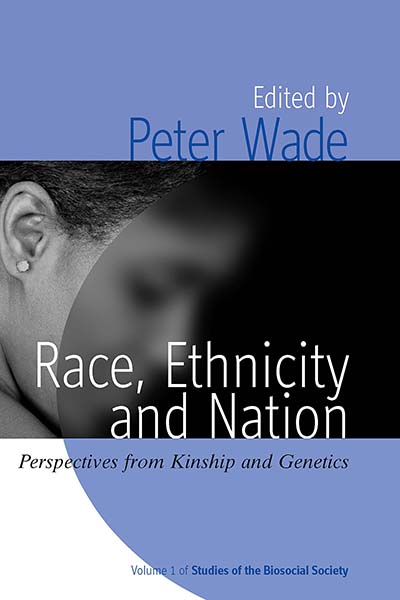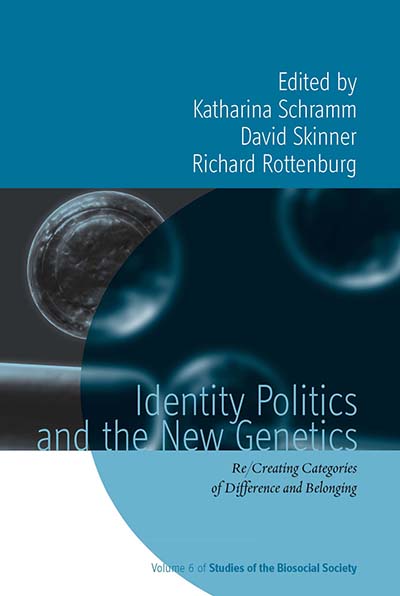Race: An IntroductionPosted in Africa, Books, Brazil, Caribbean/Latin America, Europe, Health/Medicine/Genetics, History, Media Archive, Monographs, Social Science, South Africa, United Kingdom, United States on 2015-09-21 20:56Z by Steven |
Cambridge University Press
August 2015
272 pages
13 b/w illus. 4 tables
245 x 190 x 12 mm
Hardback ISBN: 9781107034112
Paperback ISBN: 9781107652286
Peter Wade, Professor of Social Anthropology
University of Manchester
Taking a comparative approach, this textbook is a concise introduction to race. Illustrated with detailed examples from around the world, it is organised into two parts. Part One explores the historical changes in ideas about race from the ancient world to the present day, in different corners of the globe. Part Two outlines ways in which racial difference and inequality are perceived and enacted in selected regions of the world. Examining how humans have used ideas of physical appearance, heredity and behaviour as criteria for categorising others, the text guides students through provocative questions such as: what is race? Does studying race reinforce racism? Does a colour-blind approach dismantle, or merely mask, racism? How does biology feed into concepts of race? Numerous case studies, photos, figures and tables help students to appreciate the different meanings of race in varied contexts, and end-of-chapter research tasks provide further support for student learning.
- Combines a broad historical overview (from the ancient world to the present day) with wide geographical and comparative coverage to show that race means different things in different contexts
- Detailed historical and ethnographic material in textboxes, figures, photos and tables demonstrates the operation of race in everyday life
- Offers an up-to-date, critical overview of a fast-changing field
Contents
- List of figures
- List of tables
- Preface
- Acknowledgements
- 1 Knowing ‘race’
- 1.1 Chronology of race
- 1.2 Is race defined by appearance, biology and nature?
- 1.3 Culture, appearance and biology revisited
- 1.4 Race, comparatively and historically
- 1.5 Comparisons
- 1.6 Race in the history of Western modernity
- Conclusion: so what is race?
- Further research
- Part I race in time
- 2 Early approaches to understanding human variation
- 2.1 Nature and culture
- 2.2 Ancient Greece and Rome
- 2.3 Medieval and early modern Europe
- 2.4 New World colonisation
- Conclusion
- Further research
- 3 From Enlightenment to eugenics
- 3.1 Transitions
- 3.2 Changing racial theories
- 3.3 The spread of racial theory: nation, class, gender and religion
- 3.4 Nature, culture and race
- 3.5 Black reaction
- Conclusion
- Further research
- 4 Biology, culture and genomics
- 4.1 Darwin (again), genetics and the concept of population
- 4.2 Boas and the separation of biology and culture
- 4.3 Nazism, World War II and decolonisation
- 4.4 UNESCO and after
- 4.5 The persistence of race in science
- 4.6 Race and IQ
- 4.7 Race and sport
- 4.8 Race, genomics and medicine: does race have a genetic basis?
- 4.9 Race, genomics and medicine: racialising populations
- Conclusion
- Further activities
- 5 Race in the era of cultural racism: politics and the everyday
- 5.1 Introduction
- 5.2 The institutional presence of race
- 5.3 Race, nature and biology in the everyday world of culture
- Conclusion
- Further research
- 2 Early approaches to understanding human variation
- Part II Race in practice
- 6 Latin America: mixture and racism
- 6.1 Introduction
- 6.2 Latin America and mestizaje
- 6.3 Colombia: racial discrimination and social movements
- 6.4 Structural disadvantage, region and mestizaje: lessons from Colombia
- 6.5 Brazil: variations on a theme
- 6.6 Guatemala: racial ambivalence
- 6.7 Performing and embodying race in the Andes
- Conclusion
- Further research
- 7 The United States and South Africa: segregation and desegregation
- 7.1 Changing US demographics
- 7.2 Caste and class in segregated Southern towns
- 7.3 Black reaction and ‘desegregation’
- 7.4 Segregation in practice: ‘the ghetto’
- 7.5 Latinos and brownness
- 7.6 South Africa
- Conclusion
- Further activities
- 8 Race in Europe: immigration and nation
- 8.1 European histories of race
- 8.2 Issues in post-colonial migration in Europe
- 8.3 White Britons in Leicestershire
- 8.4 Asian Leicester
- 8.5 The Asian gang in London
- 8.6 Geographies of race in black Liverpool
- 8.7 Algerians in France
- Conclusion
- Further activities
- 9 Conclusion
- 9.1 Theorising race
- 9.2 Globalising race
- 9.3 The future of race
- References
- Index
- 6 Latin America: mixture and racism






